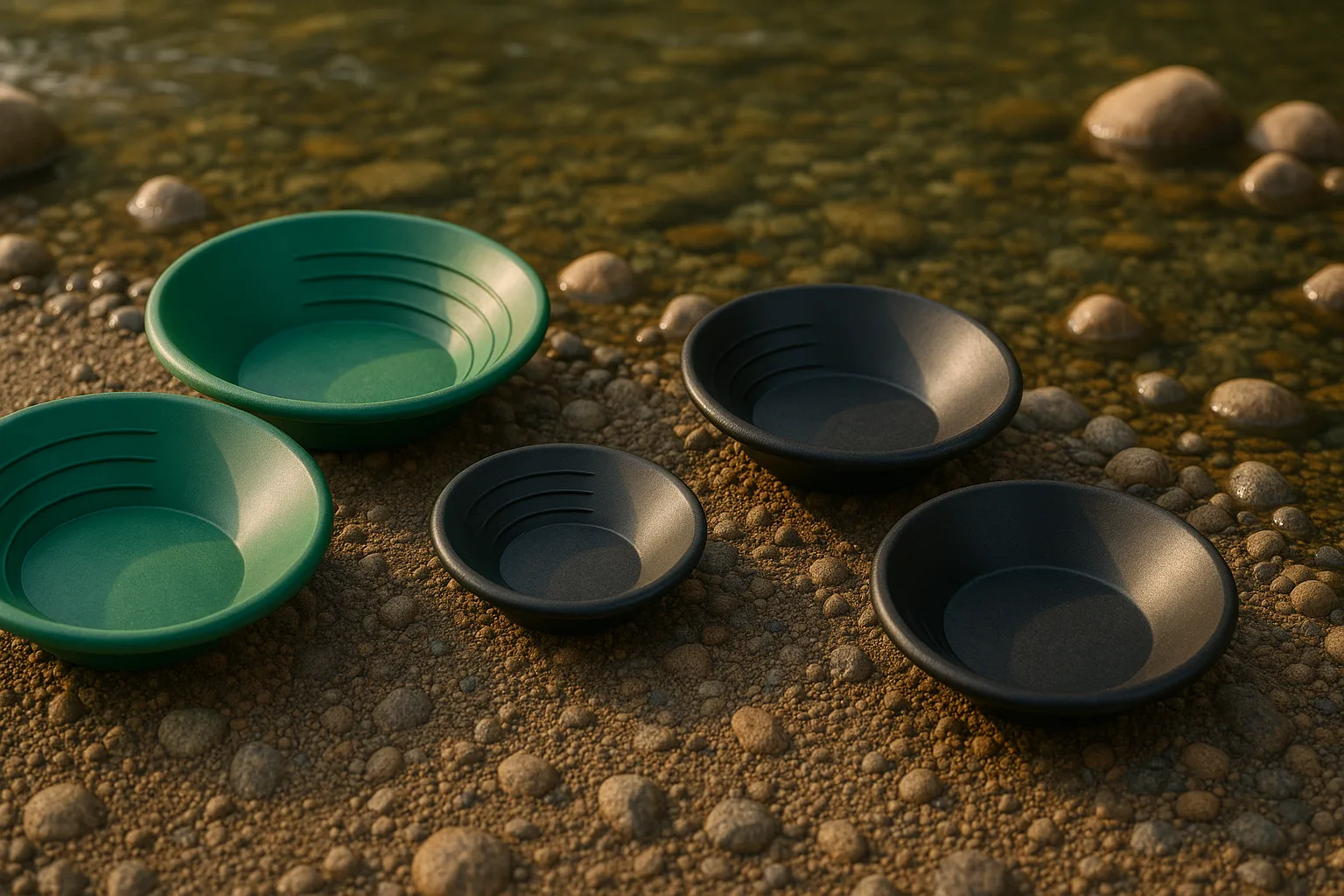How to Choose the Right Gold Pan
Choose the best gold pan for Oregon: sizes, materials, riffles, and technique tips.

Introduction
Gold panning remains one of the most accessible ways to recover placer gold in Oregon. Choosing the right pan—size, material, and riffle style—directly affects recovery rate and how fast you can work gravels in rivers like the Rogue and Quartzville Creek.
This guide explains pan selection for different gravels and water conditions, so you can work efficiently and keep more fine gold in your cleanups.
Equipment and Materials
- Gold pans: 10–14 inch, shallow vs deep, with/without textured surface
- Materials: plastic (lightweight, non-reactive) vs metal (durable, traditional)
- Accessories: classifiers, snuffer bottle, finishing pan
Step-by-Step Instructions
1) Understand pan diameters and depth
Choose diameter based on material volume and your hand/arm endurance. Larger pans process faster but require more wrist control; smaller pans favor precision for fine gold.
2) Compare materials and surface texture
Plastic pans are preferred for most Oregon creeks due to weight and non-reactivity. Matte textures improve fine gold retention.
3) Evaluate riffle design
Combination riffles (coarse and fine) allow switching between bulk reduction and finish work without changing tools.
4) Test and practice technique
Practice gentle stratification and controlled wash steps until black sands and heavies settle consistently.
Pro Tips
- Use a finishing pan with a smooth surface for final cleanup.
- Dye or scuff shiny plastic to reduce glare and improve visibility of fine gold.
- Match pan color to contrast with local sediments.
Common Mistakes
- Overloading the pan and losing gold during aggressive washing.
- Using glossy surfaces that cause gold to skate.
- Ignoring hand fatigue—leading to poor control.
Troubleshooting
If gold keeps escaping, slow down the wash cycle and verify proper stratification before each rinse.
FAQ
What size pan is best for beginners? 12-inch with combo riffles.
Does color matter? Use a color that contrasts with local sands.
Conclusion
Select a pan that fits your conditions and technique so you retain more fine gold and work longer without fatigue.
Continue learning: Using a Sluice Box · Processing Concentrates